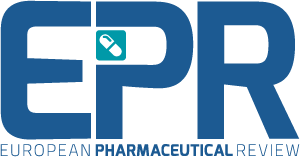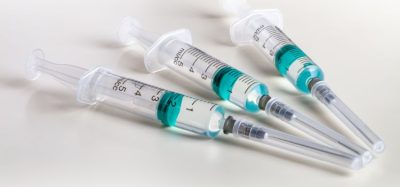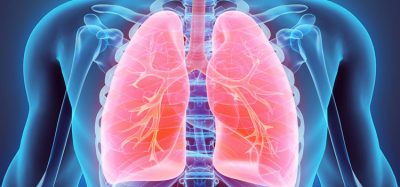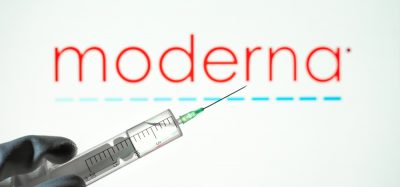Qualification of non-mutagenic impurities (NMIs)
Posted: 8 May 2025 | David Elder (David P. Elder Consultancy) | 1 comment
In this article, Dave Elder reviews the European Medicines Agency (EMA)’s updated reflection paper on the qualification of non-mutagenic impurities (NMIs), which outlines alternative approaches to animal testing.


Qualification of non-mutagenic impurities (NMIs), at higher levels than in ICH Q3A(R2)1 and ICH Q3B(R2)2 are currently addressed using in vivo animal safety studies.3 However, this approach is flawed, as it “establishes the biological safety of a drug substance or drug product with a given impurity profile.”4,5
However, this does not establish the safety profile of the impurity at the designated level.4,5 That is “extrapolating the safety of a drug substance or product with a given impurity profile to a drug substance or product with the same active pharmaceutical ingredient (API), but with an increased level of impurity” is not possible.
Additionally, when new impurities arise, the “lack of impurity specific safety data complicates the qualification process”. Finally, from a 3R’s (Replace, Reduce, Refine) perspective, “no animal studies should be performed if these studies are unlikely to provide relevant information.”4,5
EMA’s reflection paper
[The European Medicines Agency (EMA)’s] updated reflection paper4,5 on the qualification of NMIs…[uses an integrated risk assessment (IRA)] to decide whether the NMI can be considered safe at the designated level”
The European Medicines Agency (EMA) has issued an updated reflection paper4,5 on the qualification of NMIs. The document outlines alternative approaches to animal testing, including Threshold of Toxicological Concern (TTC), Quantitative Structure Activity Relationship (Q)SAR), Read Across Approaches (RAX), and in vitro approaches. An integrated risk assessment (IRA) would be used to decide whether the NMI can be considered safe at the designated level.
The IRA decision tree assesses (i) whether other impurity specific guidance, eg, ICH M7(R2),6 ICH Q3D(R2),7 are applicable, (ii) is the NMI a metabolite, (iii) is the structure of the NMI sufficiently different from the API, (iv) is further evaluation required?4,5
Metabolite
ICH Q3A(R2)1 and ICH Q3B(R2)2 highlight that impurities that are also major metabolites are considered qualified. The ratio of metabolite exposure level (Em) compared to impurity exposure level (Ei) is more important than the absolute level, ie, 10 percent.8 A ratio of 1 is appropriate if the metabolite is of low concern, but if not, then a larger ratio will be required.
However, even if the ratio is <<1, as would be the case for a prodrug; then quality factors, would still constrain the allowable level,9 ie, an API specification of 98.5-101.5 percent would not be tenable if the major impurity had a specification limit of >2 percent.
Structural similarity to API
NMIs can be derisked by demonstrating structural similarity to the API (cf. ICH M7(R2) option 46), eg, minor modifications impacting on molecular size or molecular weight (MW). Similarity can be assessed using (Q)SAR or RAX approaches that are predictive of toxicology, pharmacokinetic (PK) or physiochemical properties of the NMI. However, there are instances where even small changes do significantly change the toxicity, ie, lactones of statins.10
Factors impacting on level of concern assessments
Several factors impact on the IRA. Foremost is the level of exposure impacted by the daily dose of the NMI, the duration of exposure, the clinical indication, the desired patient population, the clinical safety margin of the API, the route of administration5 and biopharmaceutical properties,11 eg, solubility and permeability affect the likely exposure of the NMI.
Clinical safety margin
The existing exposure data from the non-clinical safety studies can be used to derive clinical safety margins, with the caveat that the no observed effect level (NOAEL) is typically determined by the safety profile of the API and not the impurities present. Nonetheless, large safety margins, ie, the clinical exposure divided by the exposure in animal safety studies, would imply that “both API and impurities present pose little toxicity at the tested levels”.5
Total Exposure of Impurity
ICH Q3A(R2)1 identifies a limit of 1mg/day as a qualification threshold for APIs with a maximum daily dose (MDD) of 667mg/day, or greater. Harvey et al.12 analysed several key in vivo toxicology databases to provide validation for the 1mg/day limit.
Based on a body weight of 50kg, this equates to 0.02mg/kg/day. Many industry experts have argued that impurities/APIs with NOAELs less than this value are rare. EMA states that there are certain chemical moieties where this is not the case, and safety concerns cannot be discounted a priori. EMA are therefore, unwilling to accept the 1mg/day exposure limit as a “definitive cut-off value.”5
Threshold of Toxicological Concern (TTC)
The TTC is a well-established approach for Mis,6 and the same principles are applicable to NMIs. Therefore, if the exposure level is below the TTC there is no requirement for any additional action. EMA discusses the applicability of Cramer classification system13 to derive TTCs.
This approach supports TTC values of 30, 9 and 1.5µg/kg/day for class 1, 2 and 3, respectively. The US Food and Drug Administration (FDA)’s Expanded Decision Tree (EDT)14 is also exploring this approach.
However, many commentators are sceptical of this approach, as the TTCs are very low and certainly not aligned with ICH Q3A/3B.1,2 Most NMIs are likely to be class 3 based on the decision tree, and this class is (a) not structurally representative of pharmaceutical NMIs and (b) the toxicity of this class is significantly biased by presence of large numbers of very toxic components, eg, organophosphate pesticides account for 65 percent of class 3.15
Route of administration
Whereas exposure via the parenteral and pulmonary routes are 100 percent, the oral route is dependent on biopharmaceutical factors or active transport, ie, atenolol.11 In contrast, dermal delivery needs to consider both dermal and systemic absorption. EMA advocates a TTC of 4µg/day via the inhalation route and 5μg/day via the parenteral route5 (cf the default TTC of 1.5µg/day for MIs via all routes of delivery6).
When the ELSIE consortium assessed PDEs for common extractable impurities they found values significantly higher than the 5µg/day limit default.16 ELSIE advocated a lifetime TTC of 35µg/day for parenteral extractable impurities based on assessing the available safety data in the ELSIE database.17
For dermal administration, skin sensitisation is viewed as the most sensitive endpoint. Dermal sensitisation endpoints of 710, 73 and 1µg/cm2 have been assigned for non-reactive, reactive and high potency categories, respectively.5 In addition, “besides route dependent differences in bioavailability, route dependent differences in toxicity” need to be evaluated.5
Physicochemical considerations
The biopharmaceutical classification (BCS) system highlights the impact of structure on exposure for oral compounds, eg, solubility and permeability.11 Lipophilicity influences dermal absorption. Compounds that are poorly degraded or eliminated can increase concerns as they may accumulate over time.5
Clinical considerations
Risk factors need to be considered on a case-by-case basis, with several important factors that need to be considered. Treatment duration is fundamental in defining risk for NMIs in drug products. Tellingly, less-than-lifetime (LTL)6 limits based on modified Haber’s Law,18 is the primary factor in the management of MIs. ICH S919 addresses the management of all impurities (MIs and NMIs) according to a different risk benefit profile, ie, higher limits because of reduced life expectancy.
Other diseases with reduced life expectancy (eg, rare diseases) are not typically given the same regulatory relief. Alterations to the clinical indication, eg, cancer to rheumatoid arthritis may demand more stringent impurity limits due to changing risk benefit profile.5 Vulnerable populations, such as the elderly, paediatrics, pregnancy, impaired clearance capacity, all affect the risk benefit that pertain to impurities.5
Many of the different methodologies utilised for MIs, eg, RAX and (Q)SAR can be utilised for NMIs.5 With the caveat that these approaches will need to be developed/validated for general toxicity/target organ toxicity for NMIs, and this will take time, effort and considerable expense. These approaches can then be used to derive an acceptable limit (AL).
Even though ICH M7(R2)6 provides simple guidance for allowable limits of MIs during clinical development based on LTL limits, [EMA’s decision to not] adopt a similar approach for NMIs… will be seen by industry as a significant missed opportunity”
However, surrogate reference compounds with well defined safety profiles are often the most toxic members of that chemical class and this can drive overly conservative ALs, eg, RAX from very toxic small MW nitrosamines. For example, N-nitroso-1,2,3,6-tetrahydropyridine (NTHP) was initially used as reference mutagen for N nitroso varenicline using RAX.20 Subsequently, a value of 400ng/day was allocated using cancer potency approach.21
Products under clinical development
Even though ICH M7(R2)6 provides simple guidance for allowable limits of MIs during clinical development based on LTL limits, EMA has decided not to adopt a similar approach for NMIs, rather advocating a much more complex methodology.5 This will be seen by industry as a significant missed opportunity.
Conclusion
It is hard to escape the conclusion that the approach advocated by EMA is overly complex and that the methodologies required, eg, RAX and (Q)SAR, etc., for general chronic toxicology, and target organ toxicology are still in their infancy and have not been validated in accordance with current regulatory guidance.
The EMA approach advocates the use of Cramer classification system, even though the most potent sub-class, ie, class 3 is heavily populated by significant numbers of toxic substances (eg, pesticides comprise 65 percent of class 3 database) that are not representative of typical NMIs.
As a result, the Class 3 median TTC values, eg, 5µg/day for parenteral delivery, are very similar to the default TTC for MIs, eg, 1.5µg/day, but this is not representative of the intrinsic non-toxicity of typical NMIs.22 Finally, a golden opportunity to advocate a simple approach for NMIs during clinical development based on dosing duration (cf. ICH M7(R2) approach for MIs6) has not been utilised.
About the author


References
1. ICH Q3A(R2) Impurities In New Drug Substances – Scientific Guideline. Step 5. October 2006. CPMP/ICH/2737/99.
2. ICH Q3B(R2) Impurities In New Drug Products – Scientific Guideline. Step 5. June 2006. CPMP/ICH/2738/99.
3. ICH M3(R2) Non-Clinical Safety Studies For The Conduct Of Human Clinical Trials For Pharmaceuticals – Scientific Guideline. Step 5. December 2009. EMA/CPMP/ICH/286/1995.
4. EMA Reflection Paper On The Qualification Of Non-Mutagenic Impurities. 15 November 2018. EMA/CHMP/SWP/545588/2017.
5. EMA Reflection Paper On The Qualification Of Non-Mutagenic Impurities. 2 December 2024. EMA/CHMP/543397/2024.
6. ICH M7(R2). Assessment And Control Of DNA Reactive (Mutagenic) Impurities In Pharmaceuticals To Limit Potential Carcinogenic Risk – Scientific Guideline. Step 5. 18 July 2023. EMA/CHMP/ICH/83812/2013.
7. ICH Q3D(R2) Elemental Impurities – Scientific Guideline. Step 5. 2 May 2022. EMA/CHMP/ICH/353369/2013.
8. Weidolf L, Andersson T, Bercu JP, Brink A, et al. Qualification Of Impurities Based On Metabolite Data. Regul. Toxicol. Pharmicol. 2020; 110 104524.
9. ICH Q6A. Specifications: Test Procedures and Acceptance Criteria for New Drug Substances and New Drug Products: Chemical Substances. Step 5. May 2000. CPMP/ICH/367/96.
10. Schirris TJ, Renkema TH, Ritschel T, et al. Statin-Induced Myopathy Is Associated With Mitochondrial Complex III Inhibition. Cell. Metab. 2015; 22(3): 399-407.
11. ICH M9 Biopharmaceutics Classification System Based Biowaivers – Scientific Guideline. Step 5. 10 February 2020. EMA/CHMP/ICH/493213/2018.
12. Harvey J, Fleetwood A, Ogilvie R, et al. Management Of Organic Impurities In Small Molecule Medicinal Products: Deriving Safe Limits For Use In Early Development. 2017; 84:116-123.
13. Cramer GM, Ford RA, Hall RL. Estimation Of Toxic Hazard-A Decision Tree Approach. Food. Cosmet. Toxicol. 1978;16(3):255-76.
14. Stice S, Adams TB, Kolanos R, Mattia A. US FDAs update to the Cramer et al. Decision Tree: The Expanded Decision Tree (EDT). SOT 2021 Virtual session: Threshold of Toxicological Concern: Reassessing the Basis and Expanding the Horizon. 22 March 2021.
15. Reilly L, Serafimova R, Partosch F, et al. Testing The Thresholds Of Toxicological Concern Values Using A New Database For Food-Related Substances. Toxicol. Lett. 2019; 314 117-123.
16. Parris P, Martin EA, Standard B, et al. Considerations When Deriving Compound-Specific Limits For Extractables And Leachables from Pharmaceutical Products: Four Case Studies. Regul. Toxicol. Pharmacol. 2020; 118 104802.
17. Masuda-Herrera MJ, Bercu JP, Broschard TH, et al. Development of Duration-Based Non-Mutagenic Thresholds of Toxicological Concern (TTC) Relevant to Parenteral Extractables and Leachables (E&Ls). PDA J. Pharm. Sci. Technol. 2022; 76(5): 369-383.
18. Gaylor DW. The Use Of Haber’s Law In Standard Setting And Risk Assessment. Toxicology. 2000;149(1):17-19.
19. ICH S9 Non-clinical Evaluation For Anticancer Pharmaceuticals – Scientific Guideline. Step 5. May 2010. EMA/CHMP/ICH/646107/200.8
20. Elder DP. Nitrosamines: Where now? European Pharmaceutical Review. 2023. [Cited 2025May]. Available from: https://www.europeanpharmaceuticalreview.com/article/180043/nitrosamines-where-now/.
21. EMA Acceptable intakes (AIs) Established For N-nitrosamines. 1 February 2025. EMA/42261/2025/Rev. 8.
22. Hasselgren C, Kenyon M, Anger LT, et al. Analysis of Non-Mutagenic Substances In The Context Of Drug Impurity Assessment – Few Are Potent Toxicants. Regul. Toxicol. Pharmacol. 2024: 150: 105645
Related topics
Active Pharmaceutical Ingredient (API), Analytical techniques, Drug Safety, Impurities, Industry Insight, QA/QC, Regulation & Legislation, Therapeutics, Toxicology










Insightful and thoroughly detailed—thank you for breaking down such a complex regulatory topic so clearly! Your coverage of the EMA’s reflection paper and its implications for NMIs is especially valuable. One question—do you see the industry eventually shifting toward a unified framework for NMIs and MIs, especially during clinical development?